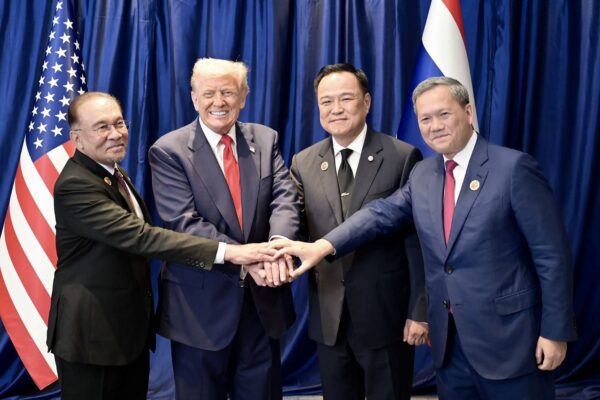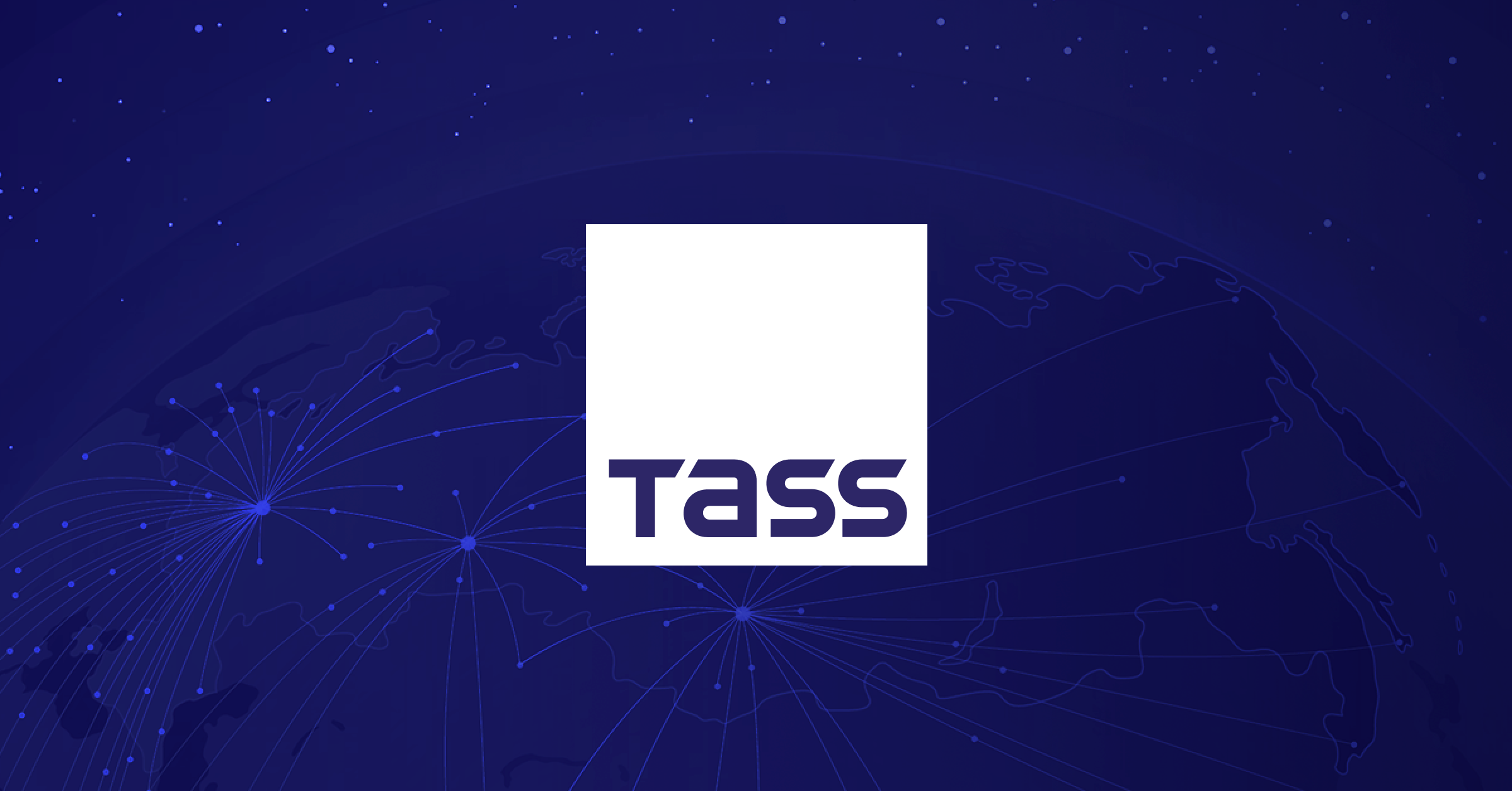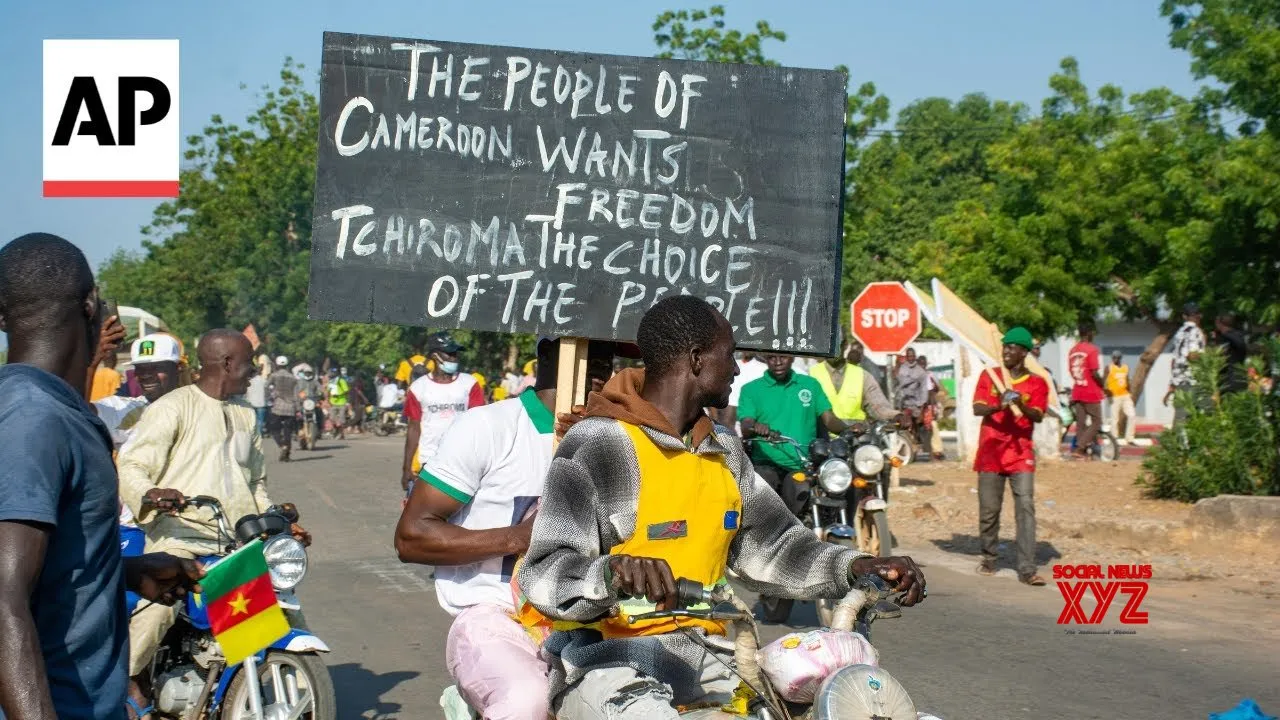Copyright thediplomat

Cambodian Prime Minister Hun Manet and Thai Prime Minister Anutin Charnvirakul yesterday signed a “peace declaration” aiming to resolve their long-running border dispute. The signing, which took place on the sidelines of the 47th ASEAN Summit in Kuala Lumpur, was overseen with much pomp by U.S President Donald Trump and Malaysian Prime Minister Anwar Ibrahim, the current chair of ASEAN. The Kuala Lumpur Peace Accord, as Trump referred to it, builds on the ceasefire agreed on July 28, which ended five days of fierce border fighting that left more than 40 dead and forced 300,000 people to flee their homes. Trump, who played an important role in prompting both sides to agree to the earlier ceasefire, hailed the agreement as a significant step forward. “This is a momentous day for all of the people of Southeast Asia as we sign a historic agreement to end the military conflict between Cambodia and Thailand,” he said after the signing ceremony. Under the agreement, the two sides have agreed to the withdrawal of heavy weapons, humanitarian landmine clearance, and enhanced cooperation to suppress online scamming operations. The agreement also establishes an ASEAN Observer Team to monitor the ceasefire and oversee military de-escalation by the two nations. As part of the agreement, Thailand will release the 18 Cambodian soldiers in its custody, part of a group of 20 whom the Thai army captured shortly after the July 28 ceasefire came into effect. The agreement reaffirms that the existing bilateral mechanisms – the General Border Committee, Regional Border Committee, and Joint Boundary Commission – will remain the primary platforms for the peaceful resolution of border issues between Cambodia and Thailand. Both sides have also undertaken to replace missing border markers with temporary ones and to accelerate border demarcation efforts in disputed areas, although the scope of this commitment remains unclear. Anwar thanked the two leaders for their commitment to the agreement. “We are delighted to have you as colleagues, as true friends, and you understand the need to secure peace, to save our people, and also the ASEAN position as a region of peace and prosperity,” he said. In a joint statement issued after the ceremony, Anutin and Hun Manet reaffirmed their “unwavering commitment to peace and security between our two countries” and “committed to de-escalating tensions and restoring confidence and mutually beneficial relations between the Kingdom of Cambodia and the Kingdom of Thailand.” Despite being described by the White House as “a landmark achievement for international diplomacy that only President Trump could accomplish,” it is unclear how effective the agreement will be. It is clear that the agreement primarily resulted from Trump’s desire to solidify his image as a “peacemaking president,” and that the agreement's content was hastily backfilled to support this political theater. This does not, however, make the agreement meaningless. The fact that Trump was able to force both sides to the table, with a hard deadline for the finalization of an agreement, could be a positive step in the direction of diplomatic normalization between Cambodia and Thailand. By tying his own prestige to the Kuala Lumpur Declaration, Trump may also make it harder for either side to take actions that strain or break the current ceasefire. At the same time, despite the two sides' commitment to demarcation efforts via the existing bilateral mechanisms, the agreement is unlikely to resolve the fundamental causes of the dispute: differing interpretations of a treaty signed between French Indochina and the Kingdom of Siam in 1907. It is apparent that a great deal of mistrust still exists between Bangkok and Phnom Penh, and that both are to varying degrees beholden or vulnerable to nationalist constituencies that view any concessions on the above issue as a form of capitulation. Shortly after the agreement, Prime Minister Anutin did a Facebook livestream in which he sought to reassure Thai nationalists that the declaration would not put Thailand at a disadvantage. He also denied rumors that Thailand had accepted the French-drawn 1:200,000 border maps preferred by the Cambodian government. There is no indication that we will open checkpoints or take any action that suggests surrendering territory, such as 'we will lose land,'” he said, adding, Thais love peace, but will not shrink from war.” As the Thai journalist Pravit Rojanaphruk of Khaosod English noted yesterday, Thai nationalist ultras remain “suspicious of any deal with Cambodia, whom they regard as tricky if not dishonest.” It is also notable that Thai officials, including Foreign Minister Sihasak Phuangketkeow, have taken pains not to refer to the agreement as a “peace agreement.” While Hun Manet’s government is under less direct pressure – it faces no domestic political opposition to speak of – it, too, cannot afford to look weak on the border issue. Due to persistent nationalistic social media chatter, the Cambodian leader was also forced to release a statement last week clarifying that the border deal would not involve losses of territory. He said that it would instead be about “preparing conditions and codes of conduct for creating and ensuring a favorable environment to end the conflict and restore relations between the two countries.” Much depends now on whether the two sides are willing and able to implement the agreement in good faith, and then use it to rebuild trust and begin the long process of normalizing and repairing their battered diplomatic relationship. Beyond that, a comprehensive solution would almost certainly require the two sides to agree to an independent demarcation of the border, compromises on territorial claims, and possible exchanges of territory. However, having unbottled the spirit of extreme nationalism, such an agreement will be tricky to negotiate. As Pravit wrote, in addition to the border conflict, the Thai and Cambodian governments “are also facing an internal struggle against the growing tide of ultranationalism, made worse by many media outlets in both countries.” Whatever the implications for the border, the agreement has clearly been a boon for U.S.-Cambodia relations. By welcoming Trump’s role in bringing about the July 28 ceasefire, and later nominating him for the Nobel Peace Prize amid much effusive praise, Hun Manet’s government succeeded in gaining a reduction in its tariff to 19 percent, the same rate gained by Thailand, a U.S. treaty ally. Yesterday’s agreement brought new stepwise improvements in U.S.-Cambodia relations. The two nations announced a finalized “reciprocal trade deal,” under which Cambodia “agreed to eliminate all tariffs on U.S. goods, including food and agricultural products and industrial goods,” the White House said in a statement. The agreement also affirmed the 19 percent tariff on Cambodian exports to the United States. The White House also announced that due to Cambodia’s “diligent pursuit of peace and security,” the U.S. would remove an arms embargo that the Biden administration imposed on Cambodia in late 2021, over concerns about human rights, corruption, and China’s growing influence in the country. It confirmed earlier news that the two sides had agreed to restart the bilateral Angkor Sentinel military exercise, which was unilaterally canceled by the Cambodian government in 2017, and said that the U.S. “will increase seats for Cambodian officers at U.S. military colleges such as West Point, Air Force Academy, and others.” For a nation that was, until recently, seen in Washington as a Chinese client state, and has been accused of complicity in criminal scam operations that have defrauded Americans out of billions of dollars, this resurrection of relations with the U.S. is no small feat. How long it lasts, and whether it does so beyond the end of the Trump administration, remains to be seen. While in Malaysia, Trump also announced “reciprocal trade deals” with Malaysia and “frameworks for trade negotiations with Thailand and Vietnam.”



